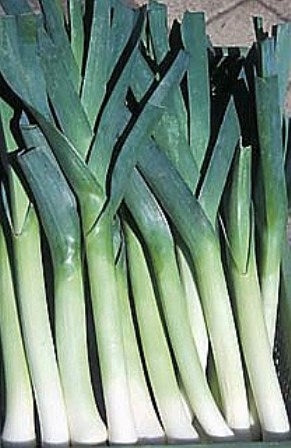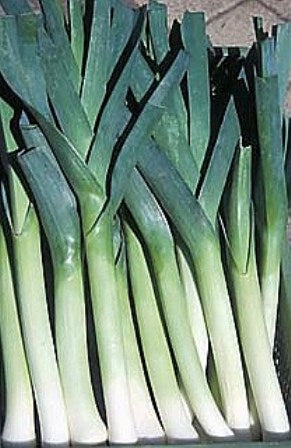LEEK HILARI KS - SATIVA la42
Have a question?

LEEK HILARI KS - SATIVA la42
Dettagli
Scientific name: Allium porrum (L.) J. Gay
Family: Liliaceae
Brief history and botanical notes on the plant
There is no certain information on the area of origin of the leek as no wild form has ever been identified. Some authors maintain that this species comes from the Celtic area, where it was already known around 3,000 BC.
In Egypt, cultivated together with onions and garlic, the leek constituted the diet of the slaves who built the pyramids, as demonstrated by the hieroglyphs of 2,000 BC. Its cultivation has extended over the centuries to the entire Mediterranean basin. In the Middle Ages, the leek represents one of those plants that made it possible to overcome the periods of great famines and plagues that afflicted man for decades.
In Piedmont, leeks are cultivated on a total area of approximately 200 hectares with a production of 30,000 q. of which 62% are produced in the Province of Cuneo. Worth mentioning is the particular cultivation of leeks in the municipality of Cervere.
The leek is a biennial plant belonging to the Liliaceae family. The stem is made up of a disk which in the lower part gives rise to a dense fasciculated root system, while in the upper part it develops long linear-lanceolate leaves. The so-called "false stem" that develops in the basal part is made up of the alternation and overlapping of sheathed leaves. Cultivation characteristics determine the length of the bulb. Flowering occurs in the second year of vegetation. In the second year the leek has a globose umbel-shaped inflorescence at its top, made up of numerous small white or pink flowers. The fruit is a capsule containing two or three black seeds, similar to onion seeds.
Pedoclimatic needs
It interrupts vegetative activity with temperatures below 8-10°C, but is able to resist even -8°C. The plant is quite rustic, it tolerates hot and muggy climates very little.
Sowing and transplanting times
The germination of the seed lasts only two years and the birth of the seedlings occurs 15 - 20 days after sowing, the depth of which must not exceed half a cm.
The optimal period is between March and May (in seedbeds) and transplanting into the field from June to the end of July, when the seedlings reach a height of about 25 cm or less, maintaining a distance between the rows of 30-60 cm, and 10-15 cm between plants. The transplanting depth must not exceed 15 cm.

Processing
The leek requires deep, fresh, permeable, fertile, irrigated soil with a neutral or slightly sub-acid pH (pH 6 – 7). When grown in the open field it is considered a renewal crop like corn and, consequently, must be followed by a cereal such as wheat, barley, rye, oats. All grasses have an impressive root system which acts as a "natural ploughing", the burial of crop residues without late plowing which damages the humus is recommended.
In the family garden, leeks can be grown the following year after potatoes, tomatoes, peppers, cucumbers, courgettes and lettuce. The crop must not be stubbled (repetition of the same crop on the same land) in order to avoid cryptogamous diseases, physiopathologies, poor and poor quality production.
Fertilizations
Leek is more demanding than garlic and onions. Over an area of approximately 40 m2 (100 kg of production) on average it absorbs: Nitrogen 335 g., Phosphoric dioxide g. 200, Potassium oxide g. 400, Calcium oxide g. 200, Magnesium oxide g. 100. It therefore has medium-high needs in nitrogen (better if immediately available at the transplanting stage), high in phosphorus and medium in potassium. The availability of sulfur is important to promote good quality. We recommend the use of mature composted manure, possibly biodynamic.
Crop care and irrigation
Repeated and careful post-transplant irrigation allows you to avoid stopping the vegetation. When the plant has reached good development it is advisable to carry out some light weeding aimed at eliminating weeds and breaking the soil crust. Ridging should be carried out approximately every 40-50 days. after transplanting to encourage whitening of the bulb.
Adversity
Good cultivation practices such as rotation, mature compost, correct and timely irrigation, ensure the outcome of healthy and strong plants. Among the most insidious parasites is the Chortophila antiqua fly, whose larva damages the root and the bulb (it also affects garlic and onion); the leek moth (Acrolepia assectella) which damages the leaves. Among the most dangerous cryptogams we can include: the leek wart (Alternaria porri) which attacks the leaves and causes rotting of the bulbs; leek pernospora (Phitophthora porri) which causes the plants and leaves to dry out and leek rust which attacks the leaves and manifests itself with reddish pustules. Among the bacteria, Bacterium carotovorum can be dangerous, causing yellowing of the leaves and putrid rot of the bulb.
Defense products
In biodynamic gardens there are no particular and invasive manifestations of parasites and fungi, therefore we recommend correct use of biodynamic preparations also as prevention.
To protect against moth we recommend rock flour and horsetail infusion every 2-3 weeks (also useful for preventing fungal diseases). The affected plants must be cut, after which they will grow back again.
For the fly (which is perhaps the most widespread problem) the possibility of favoring the parasite in the transplant phase must be carefully prevented. We recommend: correct crop rotation (the fly is a terrible flier) or covering the plants with non-woven fabric immediately after transplanting and intercropping with the carrot.
Production and collection
The time interval between transplanting and harvesting varies from 110-180 days depending on the varieties. Depending on the sowing period, the harvest can be carried out: in the month of November (sowing March-April), in the month of February-March-April (sowing May – June). In 100 m2 we can obtain approximately 300 kg of leeks.
Nutritional values
100 g of leeks contain (29 Kcal): g. 87.8 of water, g. 2.3 protein; g. 0.1 fat; g. 5.2 of soluble sugars; g. 1.2 mg fiber. 0.8 iron; mg. 54 football; mg. 57 of phosphorus; mg. 0.06 of vitamin B1; mg. 0.08 of vitamin B2; mg. 0.5 of Vitamin PP; traces of Vitamin A; mg. 9 of Vitamin C together with modest quantities of Magnesium, Sodium, Potassium, Manganese, Silicon and sulfur-nitrogen essence.
Leek has tonic, nerve, diuretic, laxative and antiseptic properties. It was used in the treatment of dyspepsia, anemia, rheumatism, arthritis, gout, urinary diseases, obesity, hemorrhoids, sores, insect bites, and is also useful for improving or maintaining the freshness of the facial skin. According to the Renaissance doctor Castore Durante, the balanced consumption of this vegetable “causes urine, facilitates menstruation, dissolves windiness, stimulates Venus; cooked with apples cleans the lungs, reduces asthma; eaten with salt it purges the stomach, cooked under ashes it resolves headaches, takes away drunkenness, cures colic pain, cures coughs, improves the voice and makes women fertile”. Normally leek is used in the form of a decoction: 30 g. of leek roots, washed and pounded in milk, represent a good vermifuge. Eating raw leek is not recommended. Finally let's remember its aphrodisiac effect!
Family and variety
The leek is a biennial herbaceous plant belonging to the Liliaceae family (to which garlic and onion also belong), among the most common varieties are: Leek Maxim (autumn and winter); Carentan Monster Leek (autumn and winter), Giant Winter Leek (winter); Riviera long leek (autumn); Large Italian leek (winter) Long winter leek (autumn or winter). Among the French varieties of some interest are: Leek Bleu de Selaise with dark green leaves and the Solaise violet leek with violet leaves.
Biodynamic treatments
The great biodynamic researcher Ehrenfried Pfeiffer recommends the Gigante di Carentan variety for the family vegetable garden as it is rustic, has a large, white stem and broad leaves. Fertilize with composted manure with biodynamic preparations, without excessive fertilization, otherwise you will have large leeks but with a sour taste. Leek grows very well after potatoes.
During the transplanting phase, it is advisable to spray cornolet manure or 500 into the furrows, or immerse the roots in it, to encourage rooting and rapid removal. Subsequently it is possible to give 501 or cornsilica to promote the concentration of nutrients in the leaves.
It prefers associations with carrots, beetroot and celery, but requires a flower bed all to itself.
Use of the biodynamic calendar
The leek, given its close relationship with the soil, is not considered a leaf plant but rather a root plant. For the sowing phase we will therefore opt for Earth days and the descending Moon for transplanting, to encourage rooting and germination, while the Earth and root days will also be dedicated to weeding, earthing and harvesting.


